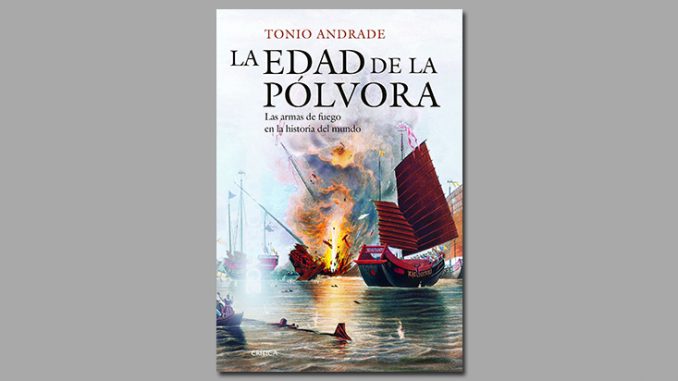
The Age of Gunpowder
Tonio Andrade
The book we are discussing today is special. «The age of gunpowder», written by Tonio Andrade, was published in Spanish in 2017 by Crítica and offers us a very different point of view than the usual one on the Military Revolution of the Modern Age. The latter, which we have addressed in these pages, was an idea that dates back to the 50s, but was popularized in the 90s. by British historian Geoffrey Parker. It has since been accepted by many as an absolute truth, despite its many inconsistencies which Parker himself acknowledges.
Tonio Andrade, far from cowering in the face of such a challenge and in a very elegant way, resorts to Chinese and European sources from the late Middle Ages and the Modern Age, demonstrating that the generalization of firearms was not an exclusively European phenomenon.
As we know, gunpowder and firearms originate from Asia. However, it is usually admitted that it was the Europeans who managed to take full advantage of these inventions, not only developing weapons that took advantage of their full potential, but also the most appropriate structures and doctrines. This series of advances in infantry weapons and artillery, both land and naval, are in turn behind other notable changes, from the introduction of the Italian style in the construction of walls and fortresses, to the development of the first galleons and the later ships of the line, capable of using large-caliber weapons. Together, they would have a good part of the responsibility for the European takeoff, which would lead the powers of this until then forgotten Eurasian peninsula to divide up the world in the Modern Age.
the merit of «The age of gunpowder» lies in demonstrating, convincingly, that for several centuries the development of both weaponry and the formulation of gunpowder itself, instruction, doctrine and Asian organization were, at least, on par with those in the West. In fact, in reality until well into the 1839th century it can be said that Asia (speaking mainly of China, although sometimes also of Korea and Japan) was ahead. Their armies included a higher percentage of gunners, their weapons were more capable, and their tactics and training were on par with any others. Even in the construction of fortifications and in siege tactics they showed themselves perfectly capable until a very late period, specifically until the beginning of the Opium Wars (1842-1856 and 1860-XNUMX), when what the author calls the Great Divergence between East and West.
Without wishing to reveal anything to the reader, to whom we highly recommend «The age of gunpowder», we will say that in the final part, when it reflects on the reasons why China ended up completely behind and defeated in the face of the military power of the European states, it goes beyond the most conventional explanations. These usually blame the Confucian mentality, conservative and immobile, for the backwardness of a "Middle Empire" that, believing itself to be the center of the world and therefore superior, had no reason to innovate. Nothing is further from reality….

Be the first to comment